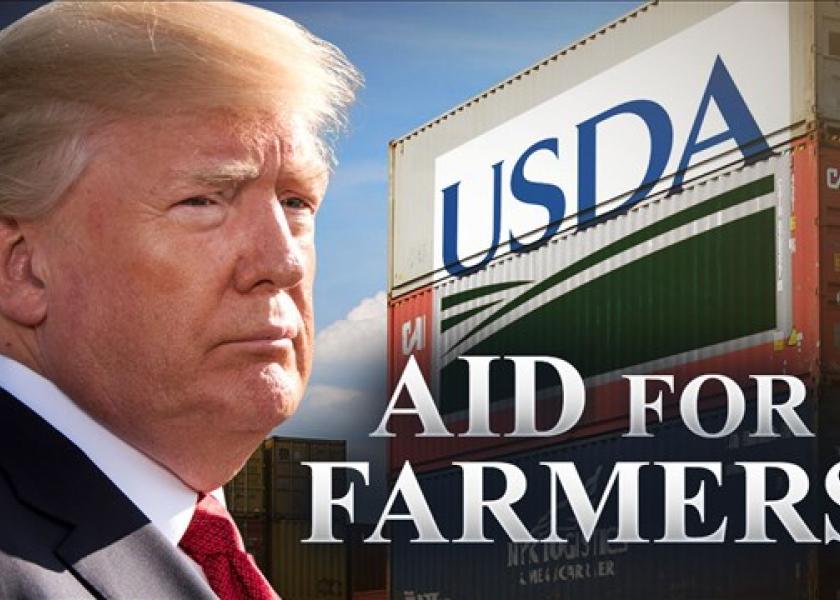New Tariff Aid Plan Offers Single Payment for All Non-Specialty Crops

As USDA worked to craft a second year of tariff aid payments under the Market Facilitation Program (MFP) they faced two significant challenges: a significant pushback from corn growers who feel they were shortchanged by the penny per bushel payment they received in 2018 and a desire to not skew planting intentions with a 2019 crop that is largely still in seed bags. USDA offered up its solution to both problems on Thursday with a second year MFP plan that will deliver payments at a single rate for all covered commodities.
Each county will be assigned an MFP payment rate based on historical production. All growers in a county will receive the same rate, regardless of the eligible crop grown. Payments will be based on reported planted acres for 2019 which cannot exceed 2018 plantings.
USDA did not release information on payment rates in a call with reporters announcing the program.
“Unfortunately, when the Chinese decided late in the game, after several visits to, to renege on many the (trade) commitments they’d already made, to his credit, President Trump immediately directed me to again create a program,” USDA Secretary Sonny Perdue said in a call with press to announce details of the program. “Because he knew that farmers would bear the brunt of this lack of a trade deal with China once again. So he has demonstrated his great affection and affinity for America’s, farmers and ranchers and he does know that because of the agricultural trade surplus, our farmers and producers, ranchers are going to bear the brunt of these trade disputes disproportionately.”
Program payments will be split into three tranches, the first coming as soon as late July. Second and third payments would come in late fall and early 2020 respectively, according to Perdue. The later two rounds of payments could be cancelled if the U.S. and China can resolve the trade dispute, Perdue said.
Covered crops are: alfalfa hay, barley, canola, corn, crambe, dry peas, extra-long staple cotton, flaxseed, lentils, long grain and medium grain rice, mustard seed, dried beans, oats, peanuts, rapeseed, safflower, sesame seed, small and large chickpeas, sorghum, soybeans, sunflower seed, temperate japonica rice, upland cotton, and wheat.
Dairy producers will receive a per hundredweight payment based on production history similar to the 2018 program while hog producers will receive payment based on inventory in a specific time frame. USDA indicated that rates and the time frame for determining hog inventories will be announced at a later date.
Tree nut producers, fresh sweet cherry producers, cranberry producers, and fresh grape producers will receive a payment based on 2019 acres of production.
The overall scope of tariff aid has expanded from $12 billion in 2018 to $16 billion this year. That expansion comes because USDA took a broader look at trade distorting practices according to USDA Chief Economist Robert Johansson.
“We account for some other variables such as repeated distortionary trade policies by China and other countries that have contributed to the slow pace of market adjustment and trade that we've seen for agricultural production,” Johansson said. “So that brings us to the $16 billion level.”
Of that $16 billion, the bulk, $14.5 billion is targeted for direct payments to farmers. Of the remainder, $1.4 billion is slated for commodity purchases through the Food Purchase and Distribution Program and $100 million is to be issued through the Agricultural Trade Promotion Program to assist market development.







